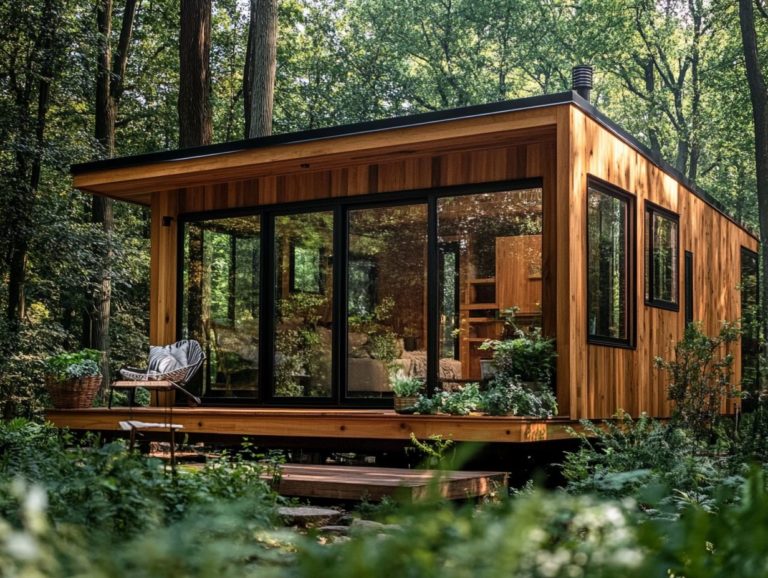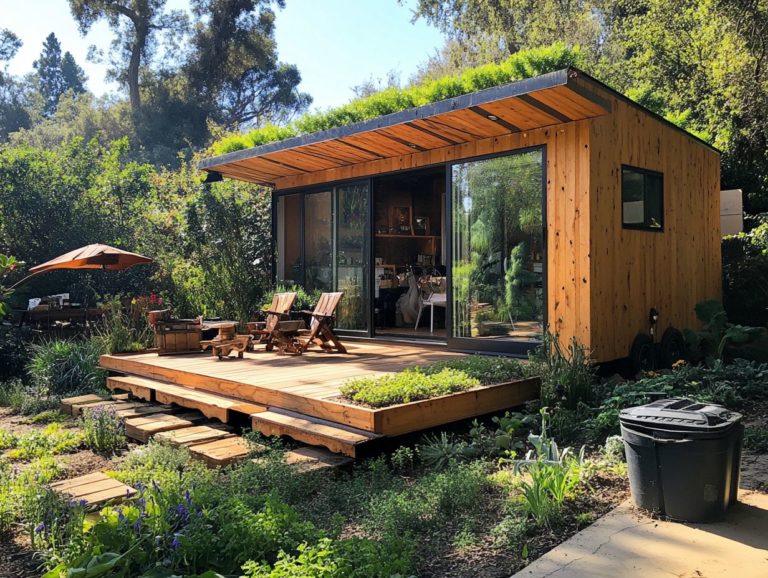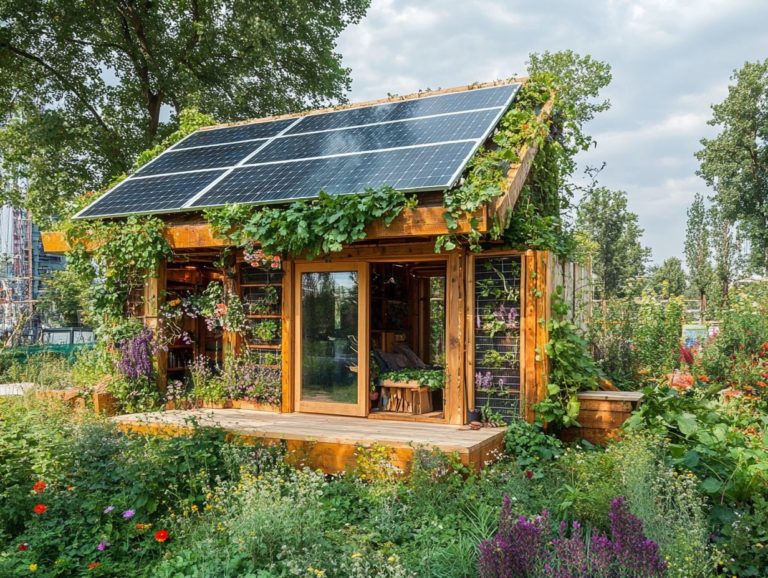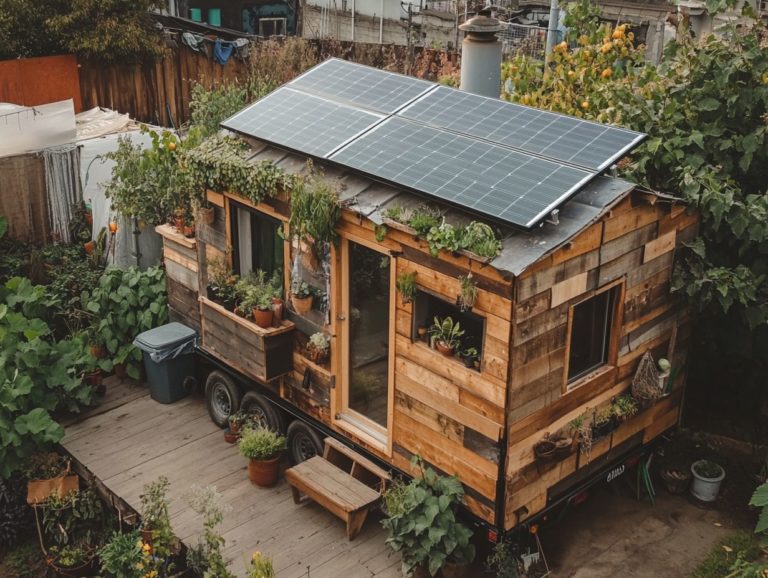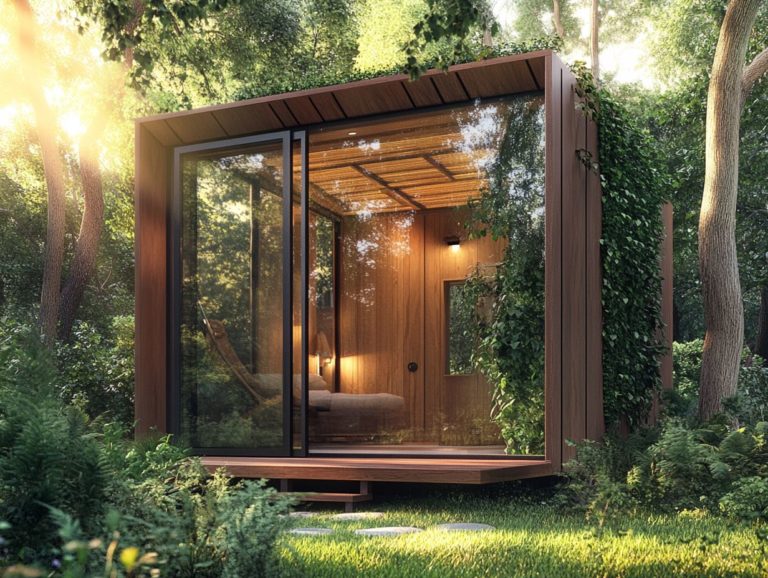Exploring Alternative Building Materials for Tiny Homes
Tiny homes have captivated the imagination of countless individuals. They present a minimalist lifestyle that emphasizes sustainability and affordability.
This journey delves into the world of tiny homes crafted from alternative building materials. It showcases their environmental advantages and financial savings.
Explore the diverse range of materials at your disposal, from natural and recycled options to innovative technologies. Gain insights into essential considerations for making informed choices.
Inspiring case studies highlight successful tiny homes constructed with these materials. They demonstrate that small living can be both eco-friendly and stylish.
Contents
- Key Takeaways:
- Benefits of Alternative Building Materials for Tiny Homes
- Types of Alternative Building Materials
- Considerations Before Choosing Alternative Building Materials
- Examples of Tiny Homes Built with Alternative Materials
- Frequently Asked Questions
- What are some alternative building materials for tiny homes?
- What are the benefits of using alternative building materials for tiny homes?
- Are there any downsides to using alternative building materials for tiny homes?
- How can I ensure the safety and durability of alternative building materials for my tiny home?
- Can alternative building materials be used for all components of a tiny home?
- Where can I find more information and resources on exploring alternative building materials for tiny homes?
Key Takeaways:
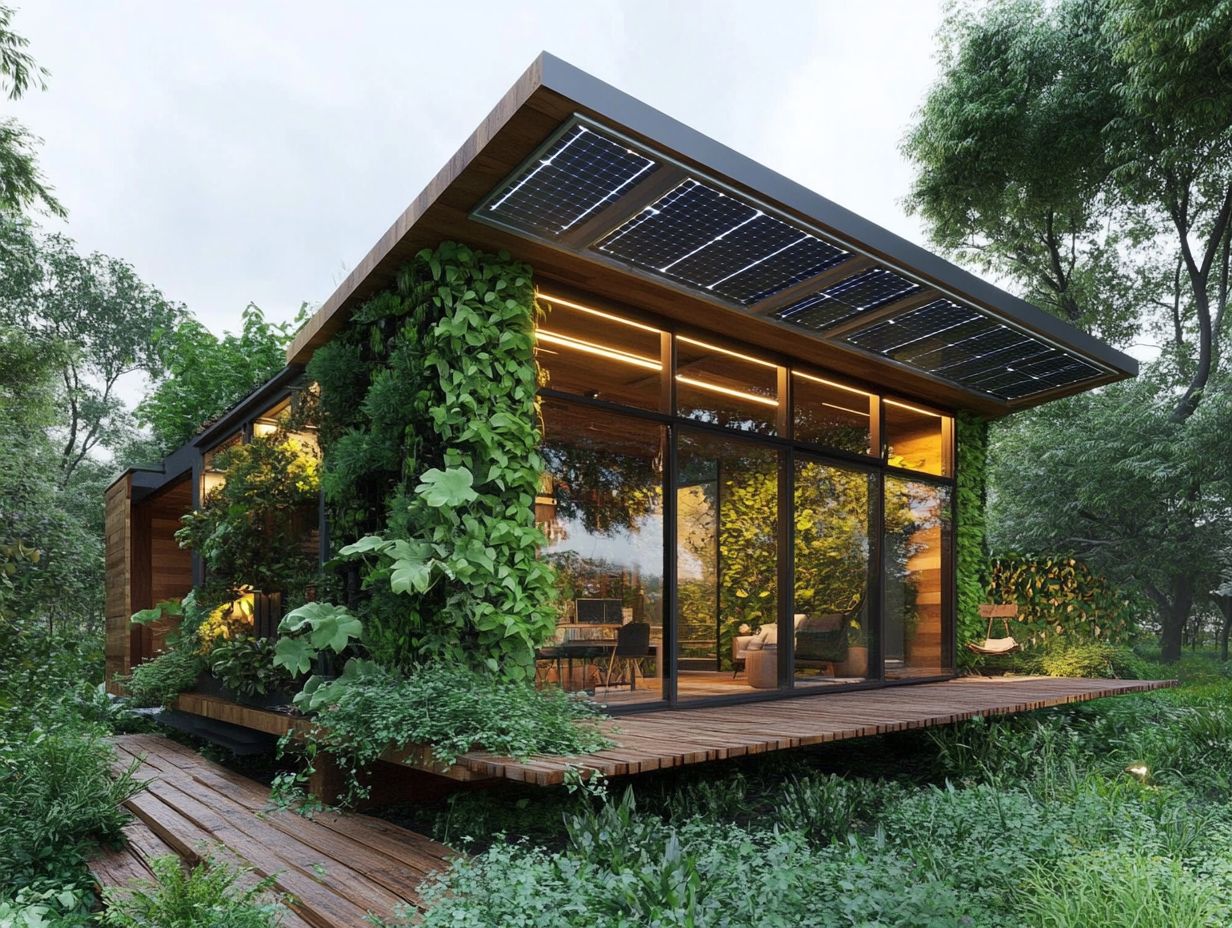
- Alternative building materials for tiny homes offer cost savings and have a positive impact on the environment.
- Natural, recycled, and high-tech materials can be used to construct tiny homes, providing diverse options for homeowners.
- Before choosing alternative materials, consider factors like climate, location, and building codes to ensure safety and functionality of the home.
What are Tiny Homes and Why Use Alternative Building Materials?
Tiny homes are your gateway to efficient living. They embody the principles of sustainable living and minimalism.
These compact spaces often use alternative building materials. This aims to lessen environmental impact and promote eco-friendliness.
Innovative designs maximize functionality and comfort. They keep carbon footprints to a minimum.
By incorporating materials like reclaimed wood, bamboo flooring, and structural insulated panels, tiny homes provide durability. They cultivate a healthy atmosphere filled with natural light.
The tiny house movement invites you to reevaluate your relationship with material possessions. It champions a lifestyle that values experiences over excess.
This shift not only brings financial savings but also fosters a deeper connection to the environment.
By opting for eco-friendly construction methods, such as solar panels and rainwater harvesting systems, you significantly reduce reliance on traditional utilities. This is a crucial step in our ongoing battle against climate change.
Utilizing alternative materials not only curbs deforestation but also bolsters local economies. Sourcing products regionally creates a ripple effect of sustainability that benefits entire communities.
Benefits of Alternative Building Materials for Tiny Homes
The advantages of utilizing alternative building materials for tiny homes are extensive. These benefits encompass enhanced energy efficiency and a diminished environmental footprint.
By opting for sustainable choices such as recycled steel, reclaimed wood siding, and high-efficiency appliances, you can craft spaces that trim your utility costs. They also make a meaningful contribution to the well-being of our planet.
Environmental Impact and Cost Savings
Utilizing eco-friendly materials in tiny homes significantly reduces your environmental impact. This approach also offers substantial cost savings.
By adopting practices like greywater recycling the process of reusing water from sinks and showers and installing solar PV systems, you minimize your carbon footprint.
You ll enjoy lower utility bills and increased financial savings over time with energy-efficient solutions. Innovative designs that incorporate natural insulation and sustainable building materials can further enhance your energy efficiency.
When you choose reclaimed wood or bamboo, you re not just helping to combat deforestation. You ll likely find that your heating and cooling costs decrease due to improved thermal performance.
Implementing rainwater harvesting systems conserves valuable water resources and cuts down on municipal water fees. Real-world examples, such as communities embracing these strategies, highlight the dual benefits of protecting the environment while reaping tangible financial rewards.
Take the first step towards a sustainable lifestyle by considering tiny homes made from alternative materials!
Types of Alternative Building Materials
When you embark on constructing tiny homes, a variety of alternative building materials at your disposal can significantly enhance sustainability and performance. Consider eco-friendly options such as:
- structural insulated panels
- natural cork insulation
- prefabricated homes
These innovative solutions not only promote energy efficiency but also ensure durability. This allows you to create a space that aligns with your values and aspirations.
Natural Materials
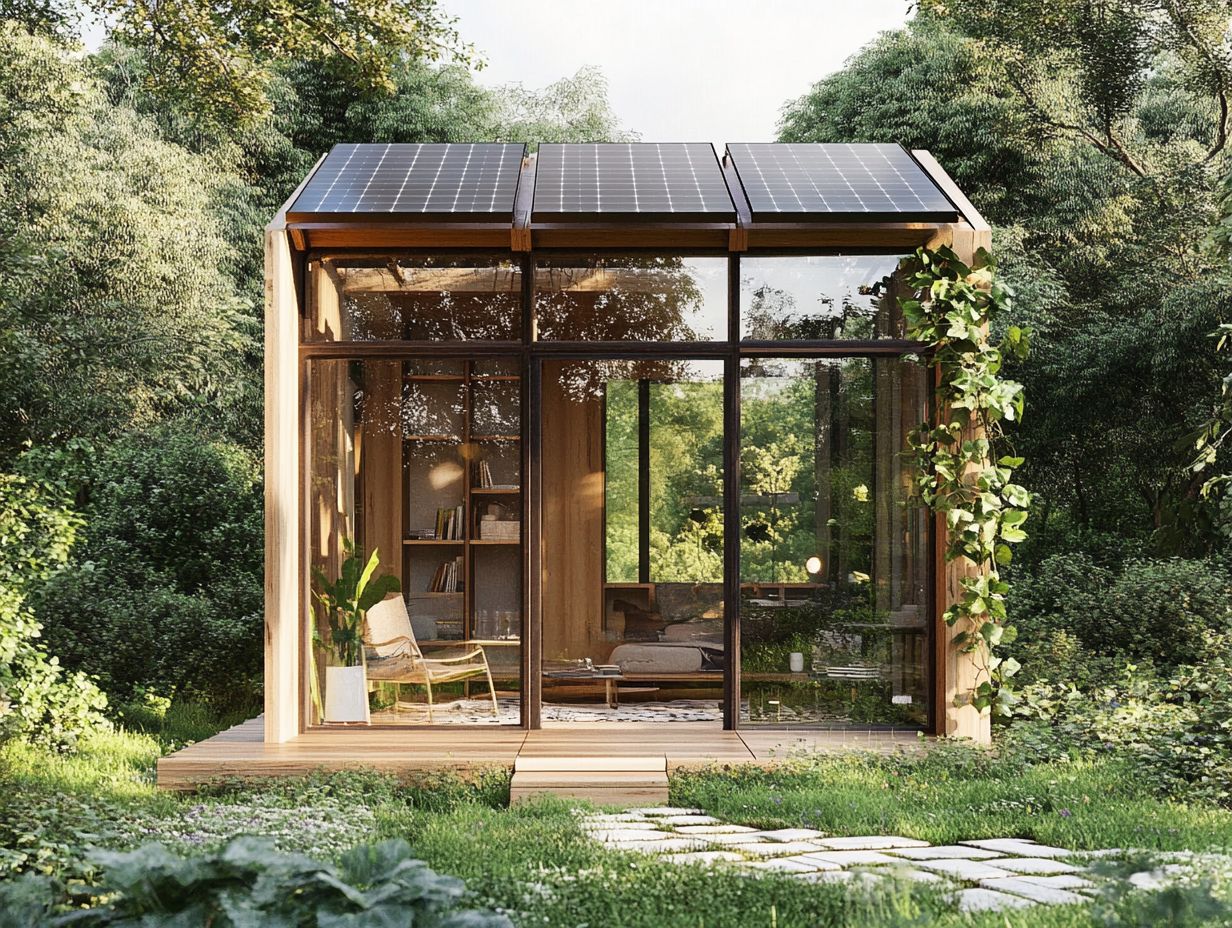
Natural materials are taking the tiny home world by storm! They are becoming increasingly popular in tiny home construction, thanks to their sustainability and aesthetic charm.
Consider options like bamboo flooring and reclaimed wood. They not only highlight eco-conscious choices but also enhance the structural integrity and warmth of your living space.
Beyond these materials, you might explore straw bale and adobe. These options offer impressive insulation properties, making them perfect for energy-efficient designs.
Natural stone also emerges as a d durable and visually stunning option for countertops and exterior finishes. Take a look at various case studies that illustrate how homeowners have skillfully used these materials to craft inviting living spaces that seamlessly blend with their surroundings, balancing beauty with functionality.
Using hempcrete for walls provides sustainability and helps regulate indoor temperatures, boosting overall comfort.
These examples show that with thoughtful design, tiny homes can be both environmentally friendly and aesthetically appealing.
Recycled Materials
Recycled materials play a pivotal role in the sustainable construction of tiny homes. They enable you to harness resources that might otherwise contribute to ecological harm.
By opting for recycled steel framing and other eco-friendly choices, you minimize waste while enhancing the longevity and resilience of your structure.
Beyond steel, materials like reclaimed wood, recycled glass, and repurposed plastic are increasingly becoming essential elements in modern building practices. The advantages of these materials go beyond mere environmental preservation; they also bring unique aesthetic qualities that can distinguish your tiny home from conventional designs. For instance, exploring unique flooring options for tiny houses can enhance the charm and functionality of your space.
Consider a recent project in Oregon that showcased the innovative use of recycled plastic for insulation. This choice not only reduced energy costs but also illustrated how creative applications of recycled items can elevate architectural standards.
Such projects exemplify a commitment to sustainability. They inspire you to explore eco-friendly alternatives in your own building endeavors.
High-Tech Materials
High-tech materials are transforming the construction of tiny homes. They provide you with advanced solutions that elevate energy efficiency and comfort.
By incorporating innovative insulation, energy-efficient appliances, and solar PV systems, you embrace not just sustainable living but also a modern lifestyle enriched by smart home technologies.
These materials empower you to maximize your limited space while effectively reducing your carbon footprint. For example, advanced windows with special coatings that reflect heat back inside work wonders by minimizing heat loss, ensuring that your indoor temperatures remain optimal throughout the year.
This significantly cuts down on energy consumption. Integrating smart home systems allows you to monitor and control your energy usage seamlessly, leading to more informed decisions about your consumption habits.
With features like automated lighting and heating, you can create a living environment that adapts to your needs. This enhances both convenience and sustainability in your tiny home lifestyle.
Considerations Before Choosing Alternative Building Materials
When you re choosing alternative building materials for tiny homes, there are several essential factors to consider, such as climate, location, and adherence to local building codes.
By understanding the environmental conditions and regulatory standards in your area, you can ensure that your selected sustainable materials not only perform effectively but also endure the test of time.
Climate and Location
Climate and location play pivotal roles in your quest for the perfect building materials for your tiny home. These factors directly impact sustainability and energy efficiency. By tuning into your local climate conditions, you can select materials that enhance thermal performance, or how well a material keeps heat inside a building, and minimize environmental consequences.
For example, if you’re in a colder region, you might choose high-insulation materials like panels made from foam insulation between two layers of structural board or insulated concrete forms to help retain warmth. If you’re in a warmer climate, opting for lighter materials such as bamboo or natural wood can improve ventilation and reduce reliance on air conditioning. Additionally, using reclaimed wood is a great sustainable choice for tiny houses, enhancing both aesthetics and eco-friendliness.
Humidity levels are also crucial if you’re in a humid area; rot-resistant materials like metal or treated wood become essential for extending your structure’s lifespan. To enhance your design, consider implementing sustainable design practices for tiny houses. Evaluate these factors carefully to create an incredible eco-friendly tiny home that stands out!
Building Codes and Restrictions
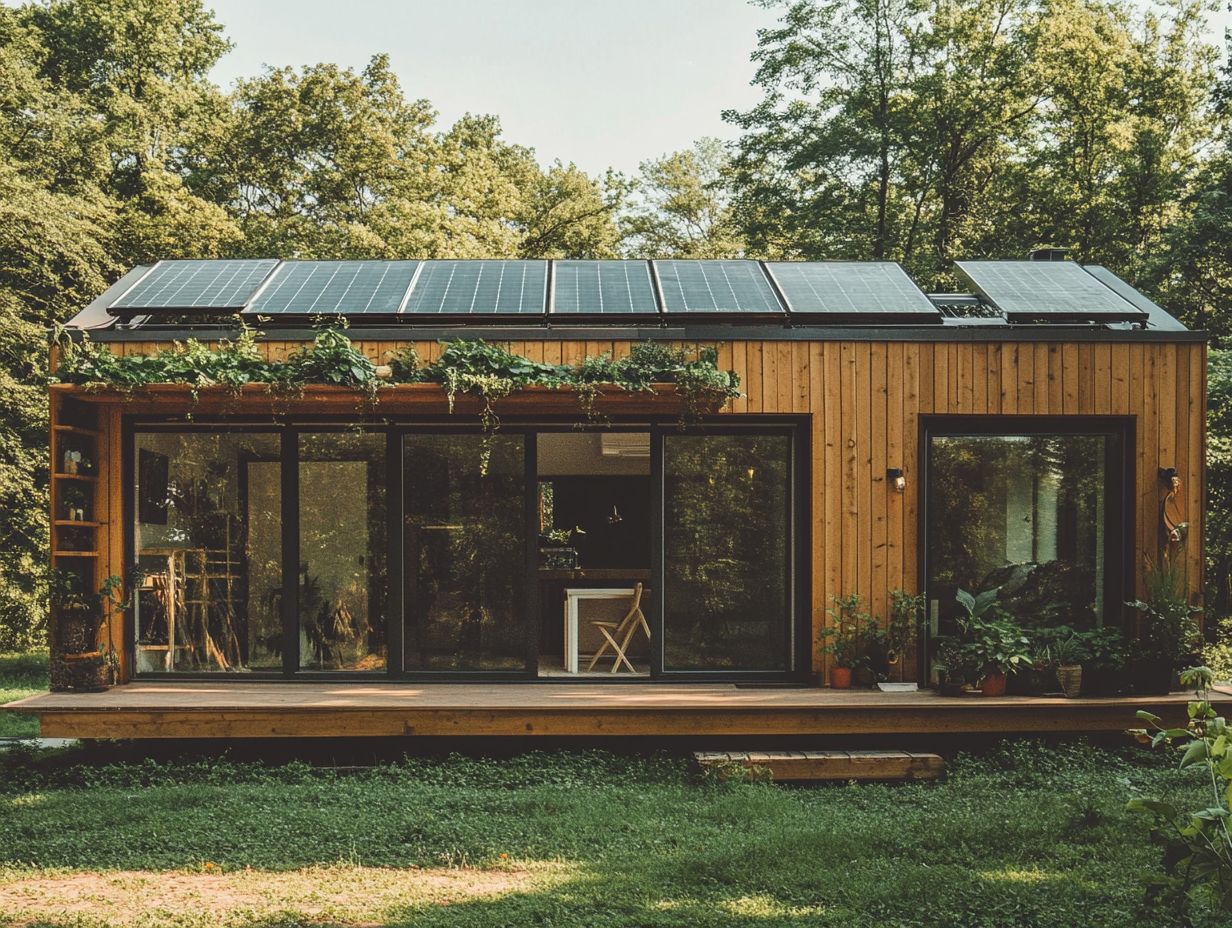
Compliance with building codes and restrictions is crucial when constructing a tiny home. These regulations ensure safety and promote sustainability. Understanding the local building codes related to the tiny house movement significantly impacts your material choices and overall design.
These codes dictate various aspects, from the types of materials you re allowed to use to specific requirements for insulation and energy efficiency. If you re venturing into tiny home construction, researching local zoning laws is vital, as they may impose limitations based on how you plan to use the structure and its size.
To navigate these regulations effectively while maintaining eco-friendliness, consult with local authorities, attend workshops, and connect with community builders who have successfully integrated sustainable features into their designs. By strategically applying this knowledge, you can align compliance with your aspirations for an environmentally responsible lifestyle.
Examples of Tiny Homes Built with Alternative Materials
Countless examples of tiny homes crafted from alternative materials reveal the remarkable potential of sustainable construction. Exploring eco-friendly materials and smart home technologies highlights not only practicality but also the myriad benefits of embracing a sustainable lifestyle.
Case Studies and Success Stories
Case studies of tiny homes showcase how alternative materials can yield remarkable results in sustainable construction. These narratives highlight your creativity and resourcefulness as a builder dedicated to reducing environmental impact while enhancing livability.
Consider the inspiring community in Oregon, where reclaimed wood and repurposed shipping containers became the foundation for innovative designs. By choosing these materials, you can minimize waste while creating homes with distinct character. For more insights, explore the best materials for tiny house construction.
In Colorado, another tiny home project demonstrates the power of solar panels and collecting and using rainwater. This shows how sustainable practices can significantly boost energy efficiency and promote water conservation.
These examples prove that tiny living is entirely feasible while fostering a sense of community and shared responsibility. Embrace a lifestyle inspired by sustainable building practices!
Frequently Asked Questions
What are some alternative building materials for tiny homes?
Some alternative building materials for tiny homes include reclaimed wood, shipping containers, straw bales, and earthbags.
What are the benefits of using alternative building materials for tiny homes?
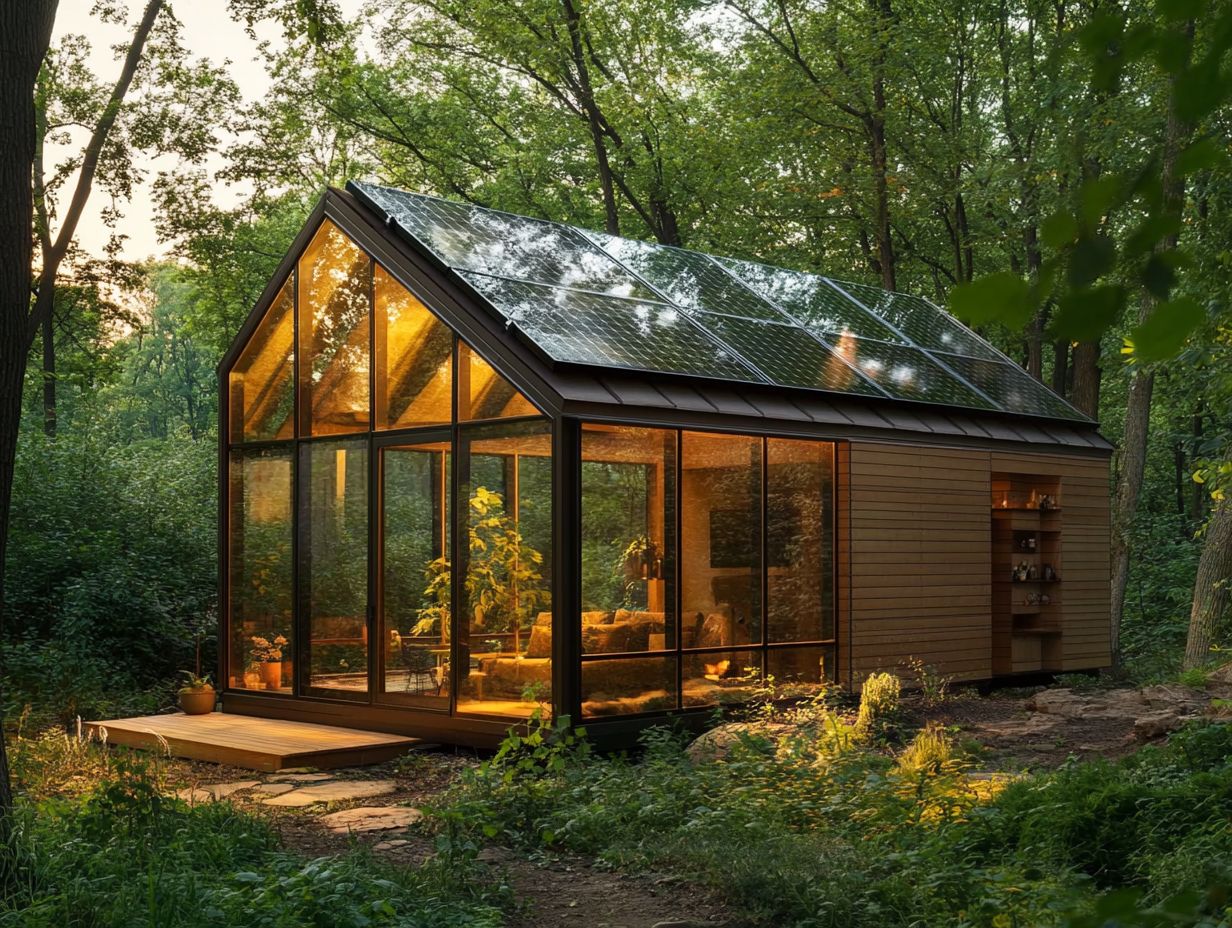
Using alternative building materials for tiny homes can reduce construction costs, decrease environmental impact, and provide unique design opportunities.
Are there any downsides to using alternative building materials for tiny homes?
Some downsides include limited availability of materials and the specialized knowledge needed for construction. You might also face challenges with local building codes.
How can I ensure the safety and durability of alternative building materials for my tiny home?
Thorough research and professional consultation are key when using alternative building materials. With proper installation and maintenance, these materials can be just as safe and durable as traditional ones.
Can alternative building materials be used for all components of a tiny home?
Yes, you can use alternative building materials for all parts of a tiny home. This includes the foundation, walls, roof, and interior finishes.
Where can I find more information and resources on exploring alternative building materials for tiny homes?
Discover a wealth of information and supportive communities online to help you dive into alternative building materials for your tiny home! Local architects, builders, and sustainable housing organizations can also offer valuable guidance.

